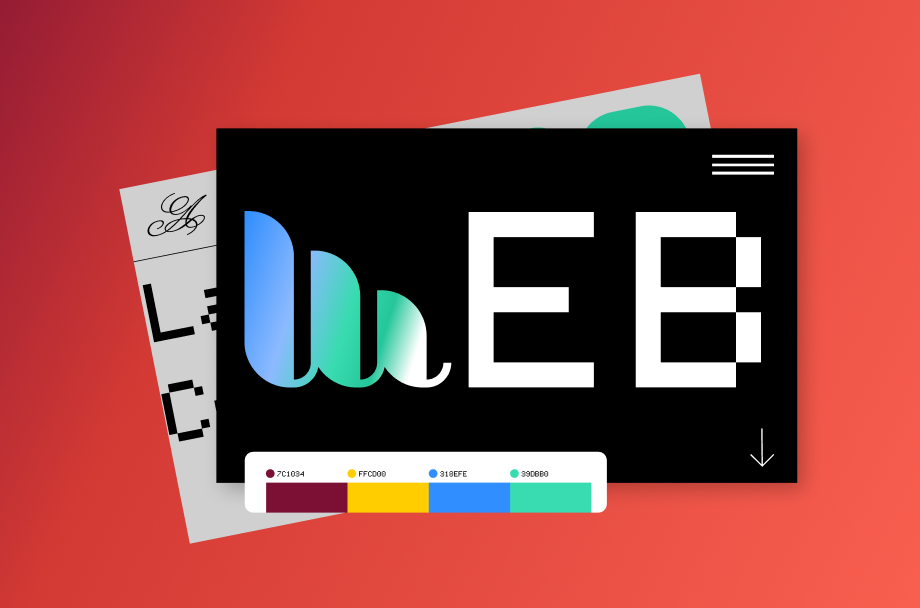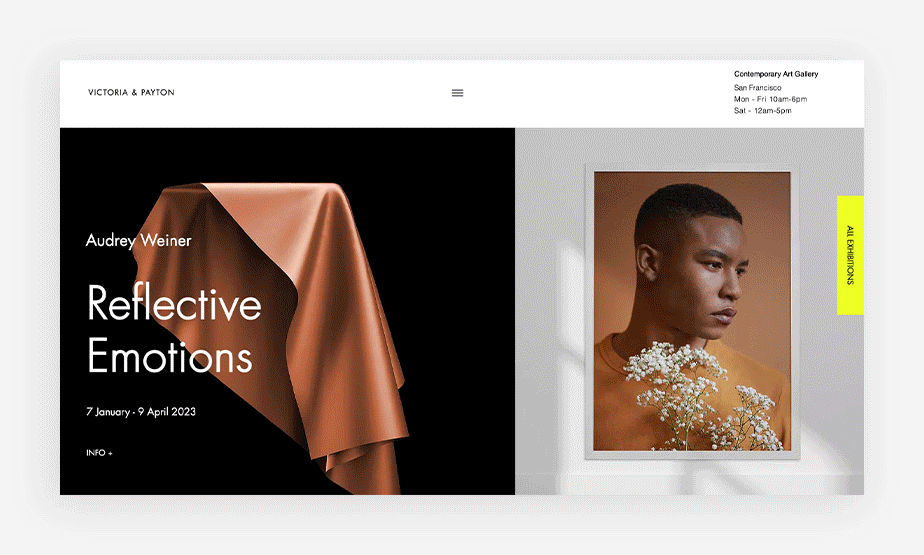What is web design? A comprehensive guide
Web design has come a long way since the first site was published in 1991. With over one billion live websites on the internet today, it’s no surprise that this industry is here to stay. Wix is home to thousands of website design professionals, enthusiasts, and designers who are empowering the industry to reach new heights. So, if you’re here to learn more about the world of web design, you’ve come to the right place.
As a preliminary to learning how to design a website, this article will hone in on the role of web design and go over helpful tips by defining critical terms and ideas, and looking at examples that will give you further insight.

01. What is web design?
Web design is the art of planning and arranging content on a website so that it can be shared and accessed online with the world. A combination of aesthetic and functional elements, web design is a type of digital design that determines the look of a website—such as its colors, fonts, graphics and user interface (see our guide on website design best practices).
Today, creating a website is one of the pillars of having an online presence. Because of this, the world of web design is as dynamic as ever. It is constantly evolving, including mobile apps and user interface design, to meet the growing needs of website owners and visitors alike.
Web design is often a collaborative process that combines knowledge and tools from related industries, ranging from web design statistics to SEO optimization and UX. Web designers will often bring together professionals from these areas who can optimize performance and focus on the larger process and outcome.
Learn more: Why is web design important?

02. Web design vs. website development
The first step in our web design journey is to clarify the difference between web design and website development, since the two are closely related and often (mistakenly) used interchangeably:
- Web design refers to the visual design and experiential aspects of a particular website. We’re going to dive into more detail about web design throughout the rest of this article.
- Website development refers to the building and maintenance of a website’s structure, and involves intricate coding systems that ensure the website functions properly.
The following are some basic markup languages most commonly used by web developers to build a website:
- HTML or HyperText Markup Language, is a coding language used to create the front end of websites. It is written to include the structure of a web page and carried out by web browsers into the websites that we see online.
- CSS or Cascading Style Sheets is a programming design language that includes all relevant information relating to a webpage’s display. CSS works with HTML to design the style and formatting of a website or page, including the layout, fonts, padding, and more.
However, if you use a CMS (a computer software application that manages the digital content of a website) you can learn how to make a website and make updates without the knowledge of using code. Wix is an example of a CMS, which functions as a user-friendly system for website content development. Wix even offers you a way to design a website with AI, as well as an advanced solution for web designers called Wix Studio.
Continue reading: Wix vs. Wix Studio
03. Web design tools
Web designers require their own unique set of tools to create and design. There are a few key elements that will determine which types you’ll use, and at which stage you’ll need them.
Here are a few questions to consider: How big is your team? What kind of budget do you have? What kind of technical requirements will your site need? What is the overall aesthetic you wish to achieve? Will you create an adaptive or responsive design? What is the purpose of your website? The answers to these questions will also help you understand which kind of website builder you want to work with, or other design software tools.
Website builders like Wix are great since they don’t require code, and come equipped with a range of ready-made templates suitable to every industry. For novice web designers, website builders are a great foundational tool that can easily be customized both in terms of visual elements and functionality. For more experienced web designers, Wix Studio is the ideal platform with more advanced features for layouts, interactions, effects and designed assets.
Design software tools such as Figma, Photoshop and Sketch can be used to create wireframes, custom features and design elements. However, the major difference with these tools is that all elements must be converted to code. While these tools offer creative flexibility and collaborative integrations like hand-off features to web developers, they can require more time, knowledge and resources.
As you gain more experience with a range of web design tools, you’ll know which are best suited to you and your business needs.
04. Principles of design applied to websites
One of the first parts of understanding what web design is knowing what good web design is—and how to achieve it.
We can have a look at the principles of design for reference, a theory practiced by artists and designers which outline the visual qualities any composition should aim for. Applying these principles to web design can help beginner and advanced web designers alike achieve a site with a harmonious look and feel.
Of course, these are not strict rules to follow, but rather guidelines to learn how we can apply the various elements of a website’s design. Take it from Picasso, “learn the rules like a pro, so you can break them like an artist.” Once you understand the goals of web design and become more comfortable with each website element, you can tweak the approach with a more creative touch.
Let’s explore the following principles:


